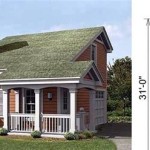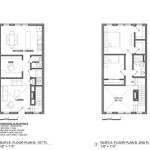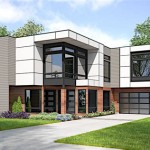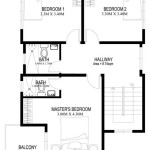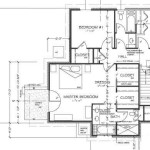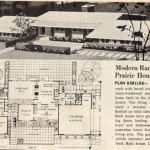Bluebird Bird House Plans: A Comprehensive Guide
Bluebirds, with their vibrant blue plumage and melodious songs, are a welcome addition to any garden or backyard. Attracting these beneficial birds to your property can be achieved by providing suitable nesting habitats. The construction and placement of a proper bluebird bird house is a key factor in successfully encouraging them to take up residence. This guide offers a comprehensive exploration of bluebird bird house plans, outlining various designs, materials, construction techniques, and essential considerations for successful bluebird habitation.
The Eastern Bluebird (Sialia sialis), Mountain Bluebird (Sialia currucoides), and Western Bluebird (Sialia mexicana) are native to North America. Bluebird populations have fluctuated over time, largely due to habitat loss, pesticide use, and competition from invasive species such as European Starlings and House Sparrows. Offering appropriate nesting sites helps mitigate these challenges and aids in the conservation of these beautiful birds.
A well-designed bluebird bird house provides a safe and secure location for bluebirds to nest and raise their young. The physical characteristics of the bird house, including its dimensions, entrance hole size, ventilation, and drainage, play vital roles in the success of a bluebird family. Improper construction can lead to nest failure, predation, or even death of the birds.
Key Considerations for Bluebird Bird House Design
The design of a bluebird bird house must adhere to specific guidelines to ensure it meets the needs of bluebirds and minimizes the risk of attracting unwanted species. Several critical aspects must be considered during the design and construction phases. These include entrance hole size, internal dimensions, ventilation, drainage, construction materials, and the inclusion of predator guards.
Entrance Hole Size: The entrance hole is arguably the most critical feature of a bluebird bird house. The ideal diameter is 1.5 inches. This size allows bluebirds to enter while excluding larger birds, such as starlings, which can outcompete bluebirds for nesting sites. Some designs incorporate a slightly oval-shaped entrance hole to further deter starlings. The placement of the hole should be approximately 6 inches above the floor of the bird house. This height prevents nestlings from falling out prematurely and provides some protection from predators reaching into the nest.
Internal Dimensions: The internal dimensions of the bird house should provide ample space for the bluebird family. A floor size of 5 inches by 5 inches is generally considered adequate. The height from the floor to the roof should be between 8 and 10 inches. These dimensions offer sufficient room for the bluebirds to build a nest and for the nestlings to move around comfortably as they grow.
Ventilation and Drainage: Proper ventilation is crucial for maintaining a comfortable temperature inside the bird house, especially during hot summer months. Ventilation holes, typically 1/4-inch in diameter, should be drilled near the top of the sides of the bird house. These holes allow for air circulation, preventing the interior from overheating. Drainage holes are equally important for removing rainwater that may enter the bird house. These holes, also 1/4-inch in diameter, should be drilled in the floor of the bird house. A slight downward slope of the floor can further facilitate drainage.
Construction Materials: The choice of construction materials significantly impacts the durability and suitability of the bird house. Untreated wood is the preferred material, as it is natural, breathable, and non-toxic. Cedar, redwood, and cypress are excellent choices due to their resistance to rot and insects. Avoid using pressure-treated wood, as the chemicals used in the treatment process can be harmful to bluebirds. Plywood can be used, but it should be exterior-grade and must be carefully sealed at the edges to prevent delamination. The thickness of the wood should be at least 3/4 inch to provide adequate insulation.
Predator Guards: Predator guards are essential for protecting bluebirds from predators such as snakes, raccoons, and cats. Various types of predator guards can be used, including conical baffles installed on the mounting pole, Noel guards (extended roofs with overhanging edges), and metal entrance hole guards. These guards make it more difficult for predators to access the bird house and prey on the eggs or nestlings.
Common Bluebird Bird House Plans
Numerous bluebird bird house plans are available, ranging from simple, basic designs to more elaborate structures. These plans vary in complexity and aesthetics, but they all share the common goal of providing a safe and suitable nesting site for bluebirds. Several popular and effective designs are detailed below, noting their specific features and benefits.
The Peterson Box: The Peterson box is a widely used and highly regarded bluebird bird house design. It is characterized by its slanted roof, which provides increased protection from rain and snow. The slanted roof also creates a small overhang that helps to deter predators. The Peterson box typically has a floor size of 5 inches by 5 inches, a height of 8 inches, and a 1.5-inch entrance hole. The sides of the box are usually slightly angled, which allows for easier cleaning and maintenance. The Peterson box is relatively simple to construct, making it a popular choice for both novice and experienced bird house builders.
The Gilbertson PVC Pipe House: This design offers a durable and low-maintenance alternative to traditional wooden bird houses. It is constructed from a section of PVC pipe with end caps and offers excellent protection from the elements. The PVC pipe house is easy to clean and resistant to rot and insects. The entrance hole is typically drilled into the side of the pipe, and the interior is lined with a textured material to provide traction for the bluebirds. While not as aesthetically pleasing as wooden bird houses, the Gilbertson PVC pipe house is highly functional and long-lasting.
The Slit Entrance Bird House: A slit entrance bird house involves a narrow, vertical opening instead of a traditional round entrance hole. This design is particularly effective at deterring House Sparrows, which have difficulty entering through the slit. The slit entrance typically measures 1 1/8 inches wide and 3 inches high. The interior dimensions of the bird house are similar to those of other bluebird bird house designs. The slit entrance bird house can be constructed from wood or other durable materials.
Modified Nest Box Designs: Many variations exist on the standard bluebird bird house design. Some modifications include adding a viewing door for monitoring the nest, incorporating a hinged roof for easy cleaning, and painting the exterior a light color to reflect heat. These modifications can enhance the functionality and appeal of the bird house, but it is important to ensure that they do not compromise the safety and security of the bluebirds.
Placement and Maintenance of Bluebird Bird Houses
The success of a bluebird bird house depends not only on its design and construction but also on its placement and maintenance. Selecting the right location and properly maintaining the bird house are crucial for attracting bluebirds and ensuring their nesting success. Several key factors should be considered when choosing a location and establishing a maintenance schedule.
Location Selection: Bluebirds prefer open areas with scattered trees and shrubs. Ideal locations for bluebird bird houses include fields, pastures, orchards, and large backyards. Avoid placing bird houses in heavily wooded areas or areas with dense undergrowth, as these habitats are less attractive to bluebirds. The bird house should be mounted on a pole or post, approximately 5 to 6 feet above the ground. The entrance hole should face away from prevailing winds and potential predators. Mounting the bird house on a smooth metal pole with a conical baffle is an effective way to deter snakes and raccoons.
Monitoring and Cleaning: Regularly monitoring the bird house is essential for identifying and addressing any problems that may arise. Monitoring should be conducted at least once a week during the nesting season. Check for signs of bluebird activity, such as nest building or the presence of eggs or nestlings. Also, check for the presence of unwanted species, such as House Sparrows, which may attempt to take over the bird house. If House Sparrows are present, their nests should be removed promptly. Cleaning the bird house after each nesting season is crucial for removing old nesting material and preventing the buildup of parasites. The bird house should be cleaned in late summer or early fall, after the bluebirds have finished nesting. Old nesting material can be removed by opening the bird house and scraping out the debris. The interior of the bird house can be lightly scrubbed with a solution of mild soap and water. Ensure that the bird house is completely dry before closing it up.
Addressing Problems: Several problems can arise that may affect the success of bluebird nesting. These problems include predation, competition from other species, and infestation by parasites. Predator guards can help to prevent predation by snakes, raccoons, and cats. Regularly monitoring the bird house and removing the nests of unwanted species, such as House Sparrows, can reduce competition. If parasites, such as blowflies, are present, they can be controlled by adding fresh nesting material to the bird house. In severe cases, it may be necessary to remove the nestlings and clean the bird house thoroughly before returning them to the nest.
Bluebird Trails: Creating a bluebird trail involves establishing a series of bird houses along a designated route. Bluebird trails are typically located in open areas and are spaced approximately 100 to 300 yards apart. Maintaining a bluebird trail requires regular monitoring and cleaning of the bird houses. Bluebird trails can significantly increase the number of bluebirds in an area and provide valuable habitat for these birds. Participating in a bluebird trail program is a rewarding way to contribute to the conservation of bluebirds.
By following these guidelines and implementing a comprehensive bluebird bird house plan, individuals can create inviting and safe nesting sites that will help to attract and support bluebird populations in their local areas. Careful consideration of design, placement, and maintenance contributes significantly to the ongoing conservation efforts aimed at preserving these iconic birds.

Diy Bluebird Approved Birdhouse Tutorial Fanningsparks

Free Bluebird House Plans Multiple Designs

How To Make A Diy Bluebird House Birds And Blooms

Birdhouse And Nest Box Plans For Several Bird Species The Birders Report

Ultimate Guide Checklist Get Bluebirds To Use Your Nest Box

Birdhouse And Nest Box Plans For Several Bird Species The Birders Report

How To Make A Diy Bluebird House Birds And Blooms

How To Build A Bluebird House In An Afternoon Diy Family Handyman

Can Someone Help Me On The Right Dimensions For An Eastern Bluebird House

Bluebird Houses A Complete Guide To Selecting Installing Growit Buildit
Related Posts

